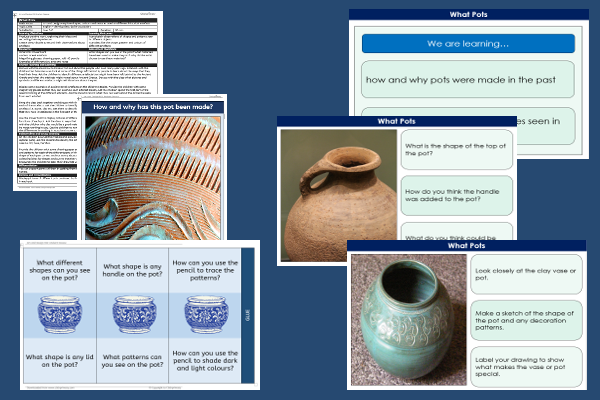Lesson One – What Pots

This art and design teaching pack for Key Stage Two gets the children to explore and describe some of the different shapes, colours and textures used on historical artefacts of pots that might have been used for a range of functions.
The class can produce sketches illustrating their observations and impressions of a range of clay pot designs to suggest what makes them special.
Download this teaching pack including a lesson plan, classroom activities and an interactive presentation to explore and describe some of the different shapes, colours and textures used on historical artefacts of pots that might have been used for a range of functions
Activities in this teaching pack include display posters to identify and describe the shape, materials and function of different pots and a table display card to select and sketch some of the different shapes and patterns that have been used on a pot design.
The interactive presentation gets the children to explore and describe some of the different shapes, colours and textures used on historical artefacts.
This lesson is part of an art and design scheme of work to get the children to practise shaping and modelling clay when making replica pots and jugs reflecting and illustrating life in the Ancient Greek civilization in the past. There are teaching activities for shared learning, differentiated worksheets to support independent learning and interactive presentations to introduce concepts and key skills.
-

Length Calculations
Practise using number calculations skills for addition, subtraction, division and multiplication when solving problems related to length measurements
-

Maths Calculations Assessment
Assess abilities in solving a range of different number problems for addition and subtraction when working with informal and formal written calculations
-

Determinant Lists
Explain and model how to make lists of objects used and found in different locations to match the correct determinants of a and an
-

English SPAG Assessment
Assess abilities in composing sentences for fiction and non-fiction using the correct spellings, punctuation marks and grammar vocabulary phrases
